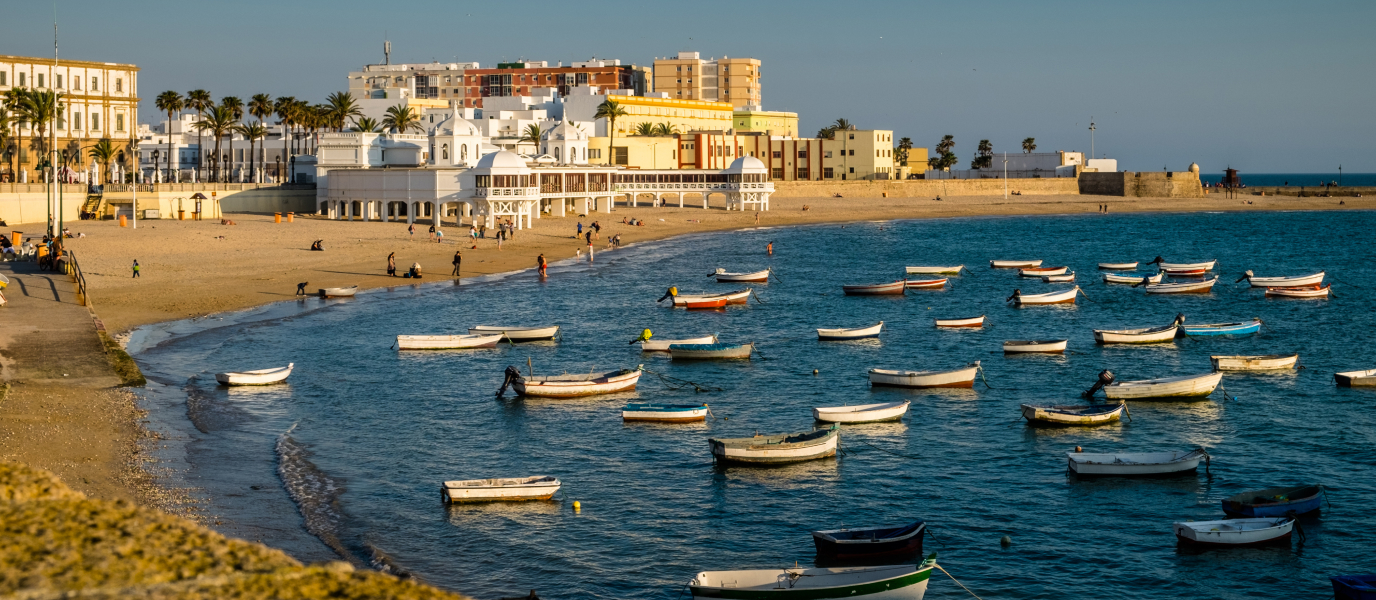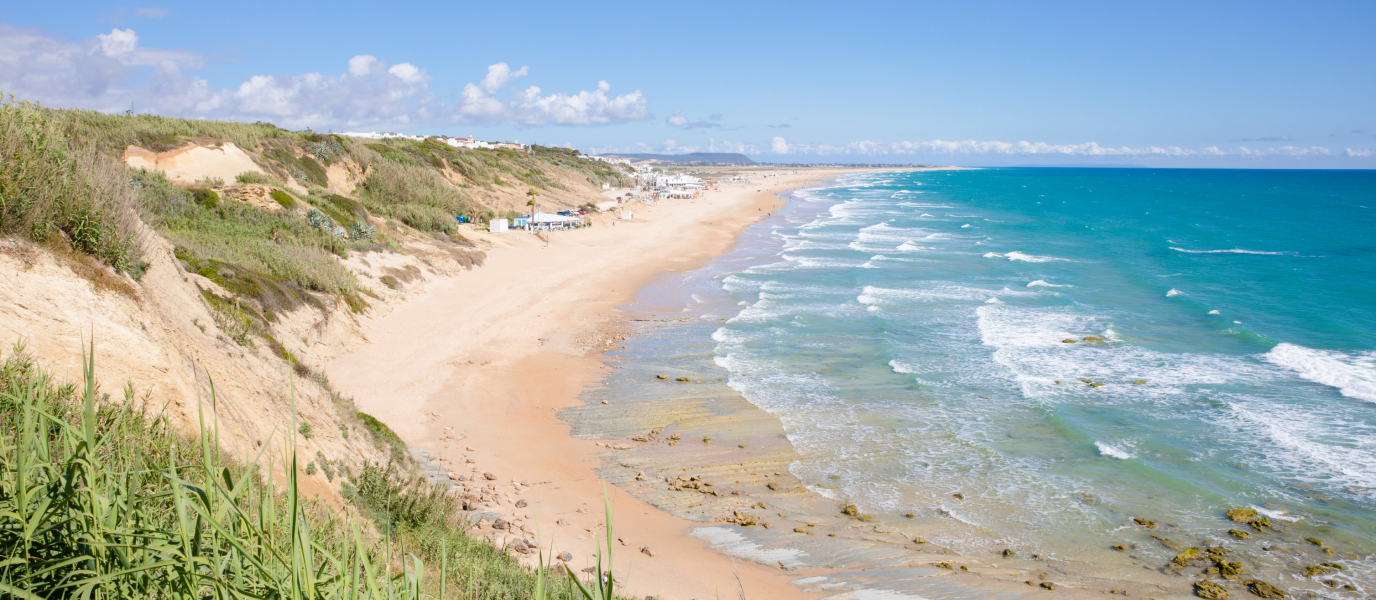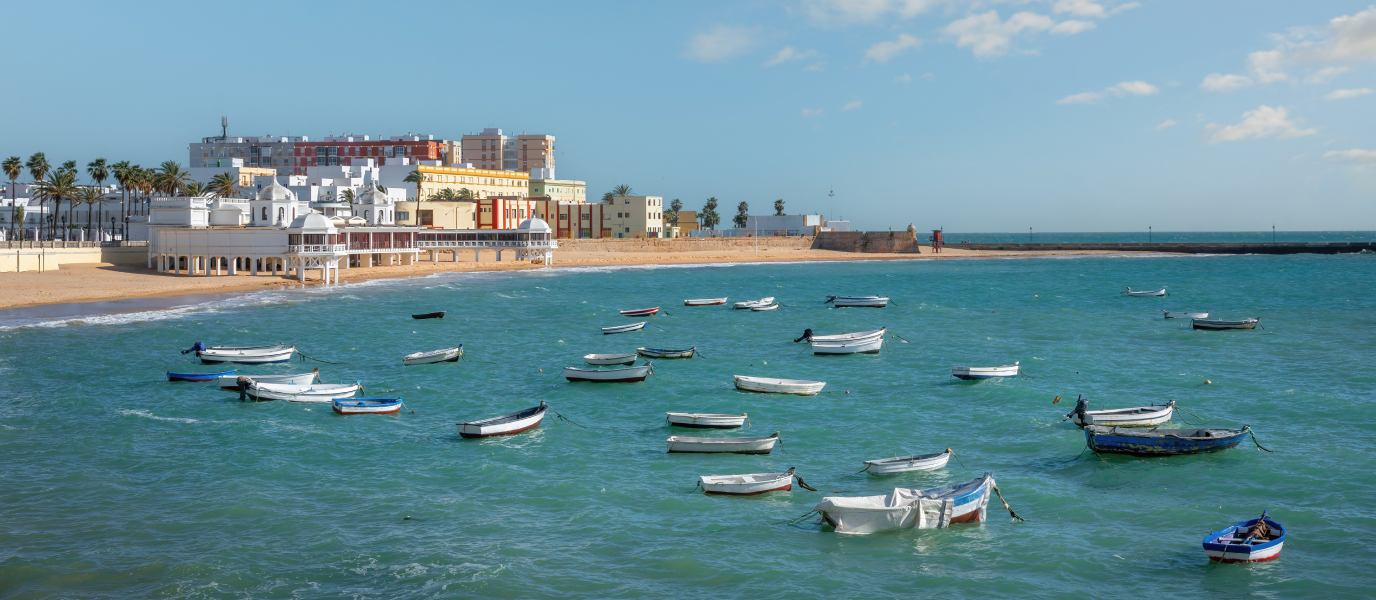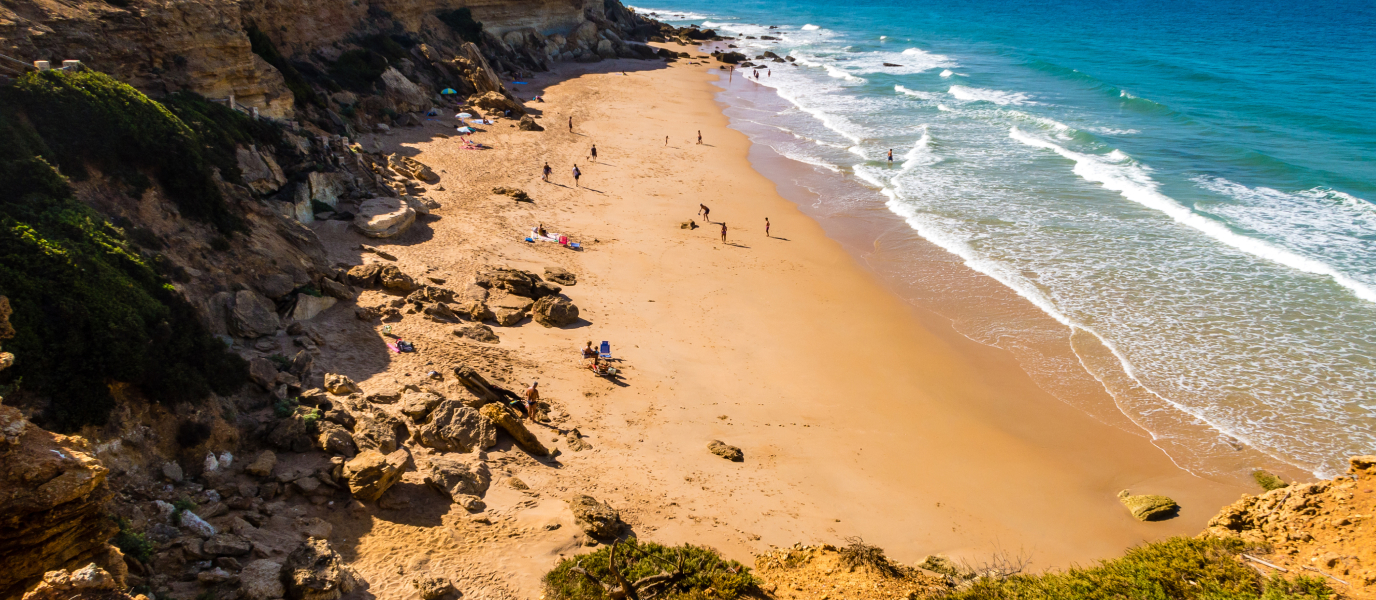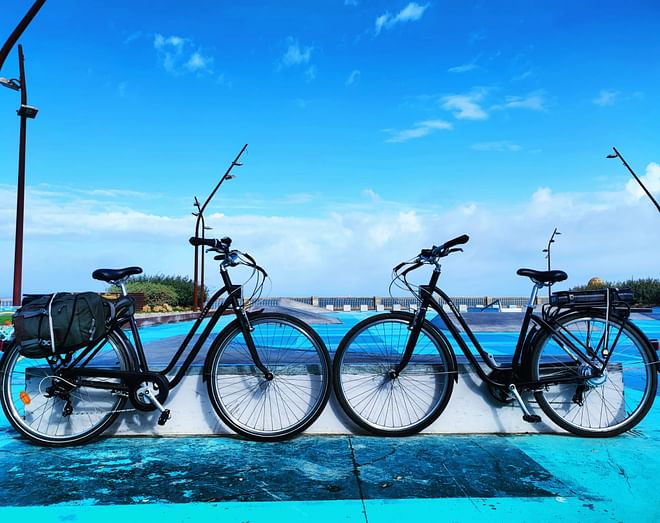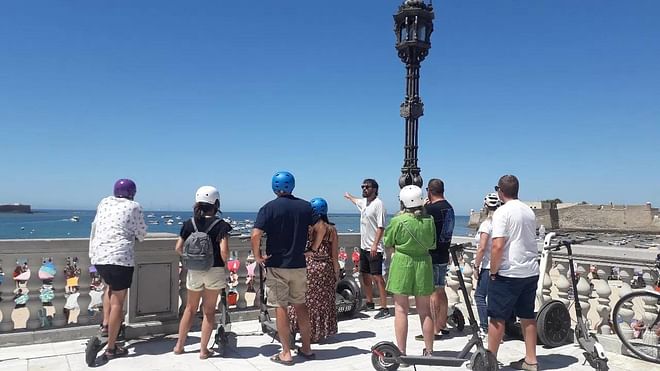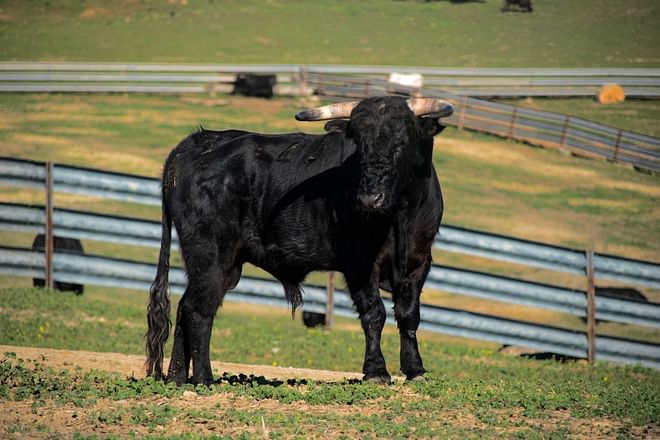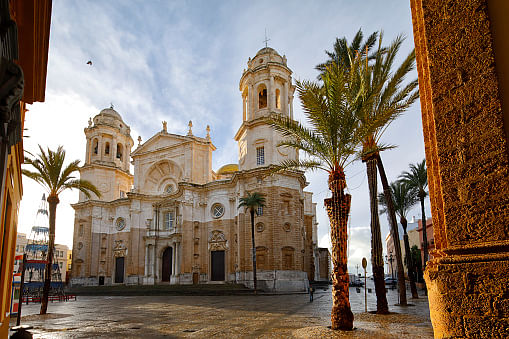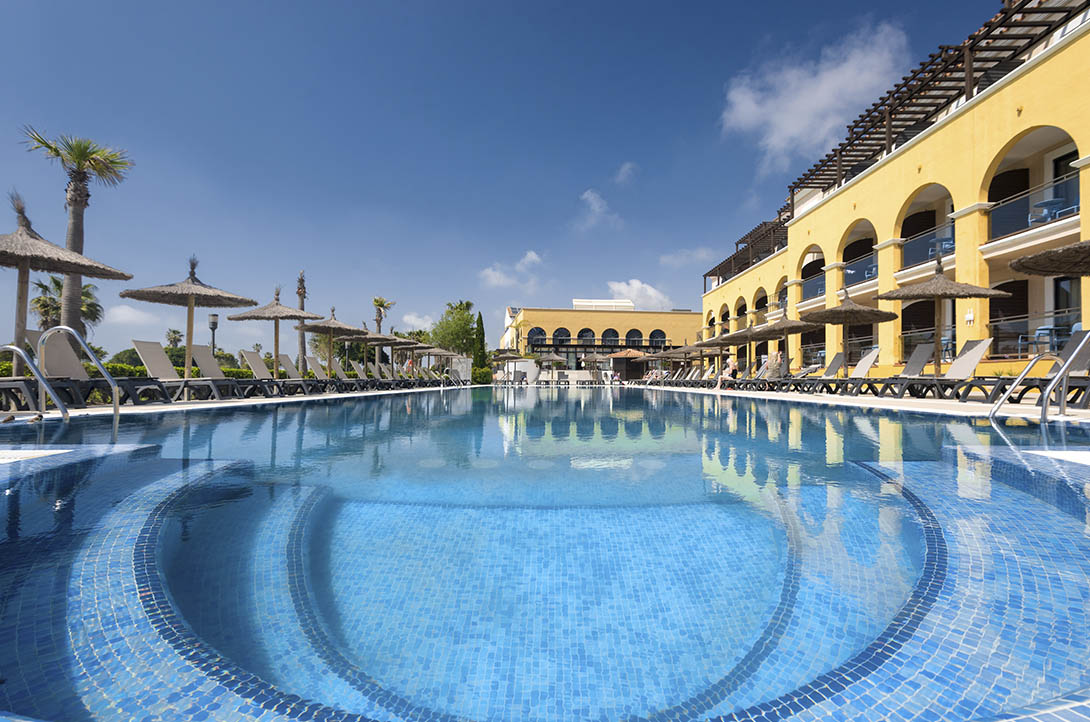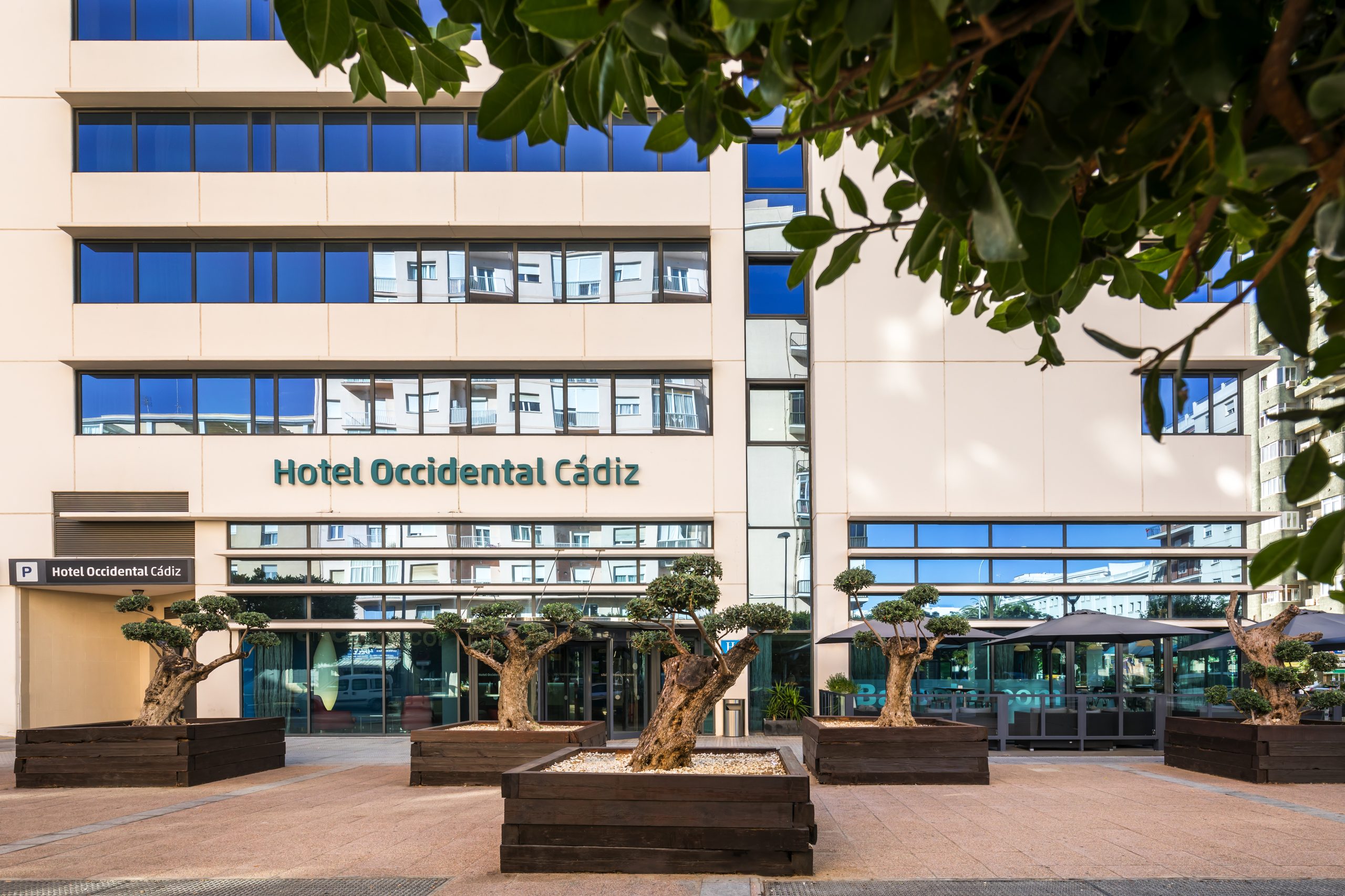La Caleta beach is the beach in Cádiz city. Yes, it’s true that the city is also home to the beaches of La Victoria, Santa María and Cortadura, which has several kilometres of sand. And yet, more than any of the others, La Caleta has a real sense of the character of Cádiz and that’s why it should be included among the best beaches in Cádiz.
Perhaps the fact that it isn’t just a place for fun and swimming has a lot to do with it. La Caleta beach has an important place in history—the channel started here which used to link the two original islands that came to form present-day Cádiz. The beach has also been used to moor boats since at least Phoenician times. What’s more, it would be impossible to understand local La Viña neighbourhood without appreciating the close links it has with La Caleta beach.
As soon as the good weather returns, La Viña residents come here every day to swim, sunbathe, play bingo, and to have lunch or dinner. And, of course, to swap experiences and chat to anyone who feels like paying them a visit.
La Caleta, the most traditional beach in Cádiz
So La Caleta is, by definition, the beach that is most typical of Cádiz and beloved by locals. But what’s it actually like? La Caleta is a 450-metre stretch of golden sand with a maximum width of 50 metres at low tide.
It’s framed by two fortifications, each set atop its own breakwater formed by vast rocks: San Sebastián castle and Santa Catalina castle. The first is home to imposing San Sebastián lighthouse whose burst of light illuminates the beach and a good part of La Viña neighbourhood.
But the most eye-catching building on La Caleta beach is, undoubtedly, the spa Balneario de Nuestra Señora de La Palma y del Real. Today it’s considered to be one of the most iconic buildings constructed in Cádiz during the first decades of the twentieth century.
Both the main body of the building and its two parallel ‘arms’ appear to embrace La Caleta, while its walls provide guaranteed shade on the hottest days.
After a long period of abandonment, plans were once underway to restore the building for public use, but at present it’s used exclusively for administrative purposes and is the headquarters of the Subaquatic Archaeology Centre of the Andalusian Historical Heritage Institute. This is perhaps unsurprising once you learn that more historic remains have been found in this area of La Caleta beach than anywhere else in the whole of Cádiz city. Today, many of these finds are on display in the Museum of Cádiz.
What you can do on La Caleta beach
Apart from enjoying a spot for sunbathing and swimming, La Caleta is the place to be. There’s always something going on in this beautiful area of the city. Some might seem somewhat surprising, or even totally unprecedented, if you aren’t familiar with life in La Viña. For example, groups of caleteros head down to the beach when night falls carrying chairs and portable tables; once there, they set up games of bingo or cards with their neighbours, friends and family. It’s definitely a sight worth seeing. Locals make their way down to the sand both in summer and whenever the weather permits.
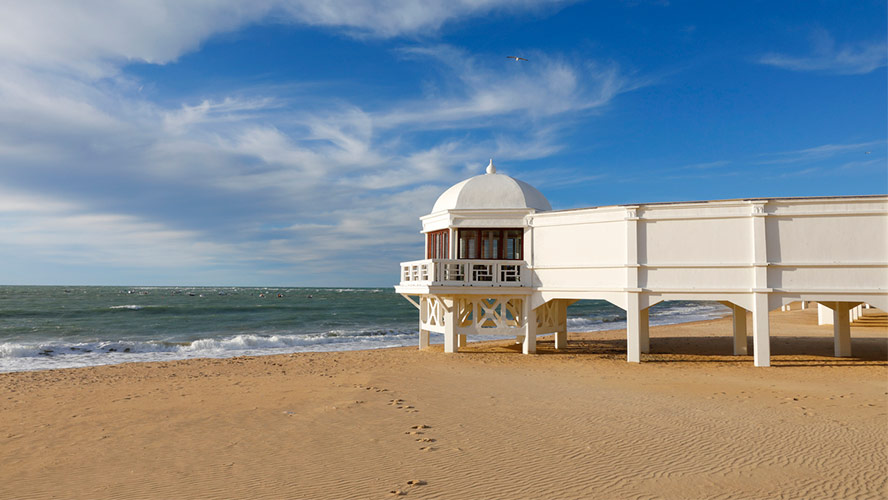
With the arrival of the good weather, La Caleta has a friendly vibe from very early on in the day. Most visitors bring lunch boxes and their own drinks to create a type of communal picnic.
With all this activity going on, you’ll have already guessed that La Caleta isn’t exactly a place of peace and calm—just the opposite. Fun is the order of the day and it’s usually very easy to strike up a conversation with your ‘towel neighbours’.
In fact, if you’re not a regular to the beach, it’s fairly standard practice for someone to ask you a few questions and immediately start chatting. Like other traditional places in the city, La Caleta beach has its own typical characters. Eye-catching people who grab your attention thanks to their clothes, behaviour and close relationship with other visitors to the beach, often helping to create the atmosphere of a true ‘living show’.
Cádiz’s La Caleta and its history
As we mentioned above, La Caleta has significantly changed its appearance since the days when the Phoenicians used Gadir as their trading base for this area of the Iberian Peninsula.
During that period, La Caleta beach and what is today Cádiz port were joined together by a channel that separated the islands of Erytheia and Kotinoussa. So today’s beach was a natural port between the two islands, which were separated by just a few metres.
Over the centuries, this channel slowly closed to create the current structure of Cádiz. Meanwhile, La Caleta continues to be an anchorage spot for small to medium boats, and small fishing and pleasure boats still moor here.
Where to eat by La Caleta
There are plenty of bars and restaurants very close to La Caleta where you can eat really well. Here are some great options:
- Bar Club Caleta (Avenida Duque de Nájera, 7): Right on the beach with a terrace with sea views. It’s the ideal place for a cold drink between each dip in the sea or later in the day, when evening falls.
- Quilla (Antonio Burgos, no number): Describes itself as a restaurant, café and terrace and it’s spot on, because it’s all this and more: a magnificent viewpoint out over the ocean and across to San Sebastián lighthouse. The menu has local products that are prepared with love and creativity.
- Barra del Faro de Cádiz (San Félix, 15): This is the casual part of the El Faro de Cádiz restaurant. Cádiz’s traditional cuisine made from high quality produce.
- Casa Manteca (Corralón de los Carros, 66): A La Viña classic where you can enjoy an aperitif in surroundings decorated with old bottles, period photographs, bullfighting posters and typical wall tiles.



































































